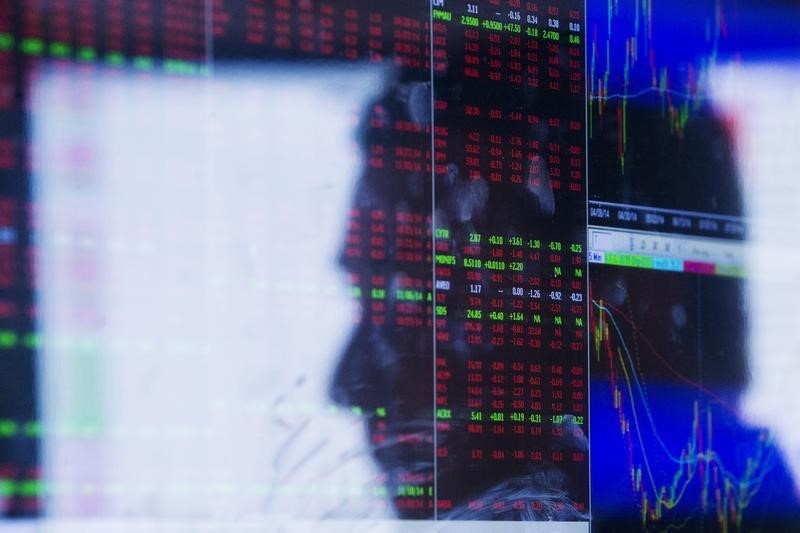Mitsubishi Heavy Industries (MHI) has announced during its Fiscal Year 2023 Financial Results briefing that it achieved record highs in order intake, revenue, and net income, surpassing the previous fiscal year’s results. CFO Hisato Kozawa revealed plans to increase the year-end dividend to JPY120 per share, marking the highest dividend in the company’s history. President and CEO Seiji Izumisawa summarized the 2021 medium-term business plan and the company’s focus on profitability and growth areas such as energy transition and automation.
Key Takeaways
- MHI reported record highs in order intake, revenue, and net income for FY 2023.
- The year-end dividend is set to increase by JPY40 to JPY120 per share.
- The company’s 2021 medium-term business plan focused on strengthening profitability and developing growth areas.
- MHI plans to balance profitability improvement with business growth in its 2024 medium-term business plan.
- The company acquired Mitsui E&S’s Naval and Governmental Ships business, a North American electrification company, and Concentric, LLC to enhance offerings in power supply and cooling systems.
- MHI is focusing on energy supply and demand, including hydrogen and ammonia fuel conversions, CO2 capture, and nuclear power utilization.
Company Outlook
- MHI aims to accelerate growth in energy supply and demand, automation, and energy conservation.
- The company is preparing for future business development by integrating Mitsubishi Power and Mitsubishi Heavy Engineering.
- A joint venture with Mitsubishi Electric (OTC:) has been formed to strengthen the power generators system business.
Bearish Highlights
- The company acknowledges the need for improvement to reach the target of JPY350 billion in profit for the current fiscal year.
- One-time expenses and risk buffers for potential one-off expenses have been addressed.
- The GX segment’s uncertain market requires significant resources and flexibility.
Bullish Highlights
- MHI has acquired businesses to strengthen its position in naval ships and electrification.
- The company is actively participating in hydrogen production and storage projects in the U.S. and CCS projects worldwide.
- MHI’s gas turbines are competitive due to their reliability, speed of development, and hydrogen or carbon capture capabilities.
Misses
- MHI fell short of the previous year’s profit target.
- There were some outflows related to IGCC in Q3 and Q4 of 2022, although the largest spending on IGCC has been suspended.
Q&A Highlights
- MHI’s collaboration with Boeing (NYSE:) and the domestic aircraft business were discussed, with no concrete plans but ongoing projects and discussions.
- The company’s role in defense equipment exports will be considered in line with decisions by the Japanese government.
- The correct figure for one-off expenses is JPY45 billion, not JPY54 billion.
Mitsubishi Heavy Industries (MHI) has showcased a strong financial performance in FY 2023, with a clear strategy to continue this trend into the future. The company’s investments and acquisitions, particularly in the energy sector, signal a commitment to innovation and market leadership. While there are challenges ahead, MHI’s management appears confident in their ability to navigate these and sustain growth. Investors and stakeholders are likely to keep a close eye on the upcoming mid-term business plan briefing in May for more detailed insights into the company’s future direction.
InvestingPro Insights
Mitsubishi Heavy Industries (MHVYF) has not only reported a stellar fiscal year but also continues to show promising signs in the market, as reflected in the latest data from InvestingPro. The company’s market capitalization stands strong at 27.64 billion USD, indicating a robust presence in the industry. Additionally, the P/E ratio, a measure of the company’s current share price relative to its per-share earnings, is remarkably low at 1.94, suggesting that the stock may be undervalued. This could be an attractive point for value investors looking for potential bargains in the machinery sector.
InvestingPro Tips highlight MHVYF’s significant dividend, which is a testament to its commitment to returning value to shareholders. The company has maintained dividend payments for 33 consecutive years, reinforcing its reputation for financial stability and reliability. This, coupled with a strong return over the last year of 105.45%, showcases the company’s ability to reward investors over time.
Investors interested in gaining more insights into Mitsubishi Heavy Industries can access additional InvestingPro Tips, which currently list 11 tips for MHVYF at To further enhance your investment research on MHVYF, use the coupon code PRONEWS24 to get an additional 10% off a yearly or biyearly Pro and Pro+ subscription. With these resources, stakeholders can make more informed decisions guided by comprehensive data and expert analysis.
Full transcript – Mitsubishi Heavy Industries (MHVYF) Q4 2023:
Takashi Inoue: The time has come for us to begin the Mitsubishi Heavy Industries Limited Fiscal Year 2023 Financial Results briefing. My name is Takashi Inoue, Senior General Manager of the Investor Relations and Shareholder Relations Department. I will be your moderator today. Thank you for joining us. First, I would like to introduce today’s speakers, Seiji Izumisawa, Member of the Board, President and CEO; and Hisato Kozawa, Member of the Board, Executive Vice President and CFO. Today, we’ll begin with a presentation on our fiscal year 2023 financial results from CFO, Kozawa. And, after that, President Izumisawa, will provide a summary of the 2021 medium-term business plan through the fiscal year 2023, after which we’ll have time for Q&A. This briefing is scheduled to end at 4:30 PM. We appreciate your cooperation during today’s event. Our presenters will use the fiscal year 2023 financial results slide deck, which is available for download at the investors section of our website. Without further ado, allow me to move on to CFO Kozawa’s financial results presentation.
Hisato Kozawa: Good afternoon, everybody. Allow me to summarize our fiscal year 2023 fiscal results and FY 2024 earnings forecast using these presentation materials. And, I would like to apologize, this material, the upload on the web has been delayed about 30 minutes or more. So, just before the upload, there has been some mistakes I had discovered, so it has taken our time to correct these mistakes. Then according to the materials, I will go through our presentations. The materials are organized according to the table of contents shown on Slide 2. First, I will provide an overview of our financial results. Please refer to Page 4. This slide shows the results for several key financial indicators. Slide 5 summarizes the highlights, order intake, revenue, and net income all exceeded FY 2022’s results and reached record highs. Compared to our latest forecast, business profit was short over a JPY300 billion target, but we exceeded our guidance for other indices including order intake, revenue, net income and free cash flow. Notably, enabled by an increase in net income, we will increase our year-end dividend by JPY40 above the previous forecast to JPY120 per share, putting the full-year dividend at JPY200 per share. This will be our highest dividend ever. Slide 6 through Slide 8 shows some highlights from my FY 2023 financial results. Slide 6 is about our GTCC business. So, Mitsubishi brand gas turbine ranked first in the world in terms of order volume on a capacity basis for two years running in calendar years 2022 and 2023. Large wind gas turbines are a particular strength of ours and the popularity of the latest JAC series has contributed greatly to our market share. So, in terms of the revenue capacity has been rising due to the strong order intake in recent years, expected to increase in fiscal 2024 and beyond. Slide 7 is about Nuclear Power business. More than 90% of revenue in this business is within Japan. But in the past, most of our revenue was from the after sales service and the restart support of PWR reactors. In the past few years, restart support for BWR reactors and construction work on nuclear fuel cycle facilities has been increasing. Going forward, the development and design of the advanced reactors are expected to ramp-up. So, we believe that we can maintain stable revenue levels for the time being. To this end, we believe that it is essential to ensure the safe and steady execution of our various ongoing projects. Slide 8 shows orders and revenue in the Defense & Space business. Order intake in FY 2023 was the highest ever for this business. In response to the Japanese government’s policy to strengthen defense capabilities, we were able to win orders for a number of large projects, including for Aircraft & Missile Systems is specialty of ours. Because most of these contracts are for multiple fiscal years, the impact of revenue in FY 2023 was limited. However, there was a certain amount of contribution and revenue also reached a record high. Slide 10, a few slides beyond, provide a little more detail on our financial results. Slide 11 includes information already provided, so I will go on our explanation. Slide 12 and Slide 13 show the balance sheet. Total assets increased significantly and approximately JPY240 billion of this was due to the currency translation effects related to foreign currency denominated assets arising from the weaker end. Interest bearing debt remained at the same level as the end of FY 2022. However, considering the net interest bearing debt, which is interest bearing debt minus cash and cash equivalents, decreased by approximately JPY100 billion from the end of FY 2022 to JPY297.6 billion. This combined with improvement of our equity ratio has served to significantly improve our financial stability. That said, as a large part of the increase in capital came from rising market valuation due to foreign exchange effects and other factors will not allow ourselves to be content with the current situation and will continue to make improvements. Slide 14 shows our cash flows. Free cash flow improved by JPY164.8 billion year-over-year, to JPY200.1 billion. Moreover, this result was an increase of approximately JPY300 billion over our forecast, which has targeted negative JPY100 billion. This significant improvement was due to an increase in inflows from advances we see toward the end of the fiscal year as well as delayed outflows from investments. Slide 15 shows factors, which caused year-over-year changes in business profit. The leftmost part shows business profit in FY 2022 which is JPY193.3 billion. To the right of this is changes in one-time expenses, which is the difference between one-time gains and losses booked in each fiscal year. In fiscal 2022, we recognized one-time expenses associated with the remediation of issues at our IGCC project, organizational transformation expenses related to our European thermal power operations, as well as one-time losses from several international projects. In FY 2023, in addition to the one-time loss related to an Aero Engine program, which was incurred in the second quarter, we also booked expenses related to claims on some international project and an impairment loss on international investments. Regarding the price optimization, while cost increases in forklift and HVDC contracted year-over-year, price optimization that is the transfer of the path cost increases to sales process contributed to an increase of JPY35 billion. Due to the factors shown here, business profit in FY 2023 was JPY282.5 billion. Slide 16 shows a summary of order intake, revenue and business profit by segment. Over the next few slides, I will explain the situation in each segment. Slide 17 shows the Energy Systems segment. As I mentioned earlier, GTCC and Nuclear Power, which were the core businesses in this segment performed strongly. Steam Power continued to contract due to headwinds in coal-fired thermal power, but this business is finding opportunities and performance improvements and fuel conversions in the service business. Slide 18 shows the Plants & Infrastructure Systems segment. Revenue in Metals Machinery which is a core business in this segment grew beyond JPY350 billion due to strong order intake in recent fiscal years as well as the weak yen. Slide 19 shows the Logistics, Thermal & the Drive Systems segment. In this segment, order intake revenue and the business profit all increased year-over-year. The ratio of revenue recognized outside of the plant is high, so the impact of foreign exchange rates or the weak yen is significant. However, even excluding foreign exchange effects, revenue in the business profit increased. Slide 20 shows the Aircraft, Defense & Space Segment. I explained Defense & Space business earlier. In the Commercial Aviation business, an increase in Aero Structures unit deliveries combined with significant impact from the weak yen served to increase business profit in the segment overall. In this slides, I’ll briefly explain, our earnings forecast for FY 2024. Slide 22 and Slide 23 provides an overview of our earnings forecast. We expect order intake overall to be as high as nearly JPY6 trillion although it will decrease versus FY 2023 levels. Revenue and profit are expected to increase year-over-year. We plan to pay a dividend of JPY0.22 per share, a year-over-year increase of 10%. Slide 24 and beyond explain the year-over-year changes in our earnings forecast. So, please allow me to provide one point of supplemental information. Please refer to the Slide 34, which is the last page of the appendix. On April 1st, we established GX Solutions as an organization responsible for new businesses related to the Green Transformation. Since this organization is primarily based on the former engineering business, it is included in the Plants & Infrastructure Systems segment. This reorganization involves the transfer of some of the businesses and the development activities previously included in the Energy Systems segment, as well as Corporate & Eliminations. This slide shows retroactively adjusted financial results for FY 2023.Please note that the fiscal 2024 earnings forecast shown on the Slide 23 and beyond, reflects these adjustments. This concludes my presentation on the financial results and the earnings forecast. So, now please allow me to move on to President Izumisawa’s comments.
Seiji Izumisawa: This is Izumisawa speaking. Please allow me to provide an overview of our 2021 medium-term business plan through FY 2023. Looking back on our 2021 MTBP and the time during which it was originally formulated, our operating environment has become increasingly uncertain due to the emergence of tenses between the United States and China as well as the COVID-19 pandemic. Japan therefore aimed to strengthen profitability and develop growth areas, rebuilding our business fundamentals while not pursuing topline growth. Even after the launch of the 2021 MTBP, we faced changes that we have not originally anticipated, such as rising geopolitical risk, including Russia’s invasion of Ukraine and rising energy and raw material costs caused by these risks. Even so, my assessment is that the various initiatives that we pursued during the 2021 MTBP have achieved results. Moreover, order intake has significantly surpassed our initial plan due to rising demand for gas turbines associated with the global move toward energy transition tailored to local conditions in each region, the growth of our Nuclear Power business and the expansion of our Defense business due to the growing move towards strengthening Japan’s national security. Going forward, we will work to reliably grow these businesses. Allow me to summarize the 2021 MTBP. I believe that initiatives to strengthen profitability have produced results. Measures to address businesses, including the reorganization of boiler plants in the Steam Power business, and the consolidation of unprofitable basis of operations in the Metals Machinery business. Moreover, we have reassigned personnel to our growth areas mainly from coal-fired thermal power to, other areas. In our existing business, in terms of the service business, we are able to expand services and equipment business through the sharing of practices among businesses and application of AI technologies. We work to optimize the portfolio of businesses through the acquisition of Mitsui E&S’s Naval and Governmental Ships business as well as a North American company active in the electrification area. We also sold the Machine Tools business. We integrated Mitsubishi Power and Mitsubishi Heavy Engineering into MHI in order to prepare for future business development. Furthermore, we formed the power generators, a system joint venture with Mitsubishi Electric in order to strengthen this business. In our growth areas, we work to realize a sustainable, safe, secure and comfortable society with efforts in both the energy supply and demand areas. On the energy supply side, MHI worked on hydrogen and ammonia fuel conversions, CO2 capture and nuclear power utilization as countries around the world made progress in energy transition according to their local conditions. In order to the build ecosystems to support decarbonization through fuel conversions, we developed and validated technologies at Takasago Hydrogen Park and Nagasaki Carbon Neutral Park and participated in the first largest scale of hydrogen production, storage and the power generation project in the United States. In light of the situation in hard to abate industries, we worked with ExxonMobil (NYSE:) and other companies to establish a CO2 solutions ecosystem and participated in CCS projects, including the transportation and the storage of CO2 incorporation with companies in Japan and around the world. In the field of nuclear power, we work to restart nuclear power plants to establish the nuclear fuel cycle and to develop advanced light water reactors. On the energy demand side, effort has been focused on automation and energy conservation in systems essential for society. We have made progress in automation of logistics as well as incentives for data centers. In order to realize the automation of warehouses, we proposed coordination among various autonomous equipment and the optimization of picking tasks with an integrated system to stimulate future demand and expand our business. We’ve developed next generation technologies for data centers, which are rapidly expanding with the spread of generative AI. In addition, in order to realize a one-stop solution combining power supply and the cooling system, which are some of MHI’s core strengths, we acquired Concentric, LLC in North America, thereby obtaining a strong base of operations, including existing customer relationships. We will further accelerate efforts to launch these businesses during the 2024 MTBP. I believe that during the 2021 MTBP, we successfully built a foundation for MHI Group’s sustainable future growth. Using these achievements as a jumping off point, the 2024 MTBP will click on the challenges of transforming MHI in order to balance further profitability improvement with business growth. The 2024 MTBP will aim to provide realistic solutions rooted in fine craftsmanship for each region and customer to expand business areas both up and down and to become a hub for, ecosystem to realize social changes. I’ll provide a detailed explanation during our mid-term business plan briefing 2024 scheduled for May 28. Now, we’d like to move on to the Q&A session.
Takashi Inoue: [Operator Instructions] Now, I would like to take some questions. Does anybody have a question? So from the [Nomura Securities, Maekawa san] (ph), would you please ask your question?
Unidentified Analyst: Thank you very much for taking the question. So, I have two questions. The first one is about the numbers of the financial results. First of all, in FY 2023, in terms of the results in the others and elimination, Corporate & Elimination, I think there has been a gap. So, what is the reason behind this, in terms of Energy System, I think, really, this is an Energy System, are there any one-time negative impact in this fiscal year, maybe in the Elimination? So, [EBITDA] (ph) was gone to the minus JPY57 billion. So, what is the background of this? Would you like to elaborate on this?
Hisato Kozawa: So first of all, in terms of any one-off elements in the Energy Systems business, although the bottom line is not much of last year, but in the fourth quarter, more than we have expected, there has been some factors we have to take care of. If there was the overseas related project, there has been some losses that we have to book. And, in terms of the Corporate & Eliminations, to be frank, a certain level of negative factors, we thought that will be coming up. But in terms of the development related cost has been booked more than we had expected. This will be mainly in our new business related areas. And, currently, we are replacing our management administrative systems. So, this is a large scale system. So, that is the reason why we decided to book expenses for these types of system related areas. So, in the fourth quarter, basically we were wondering whether we should book these type of losses, but ultimately we decided that we should book that one-time losses. Thank you.
Unidentified Analyst: So, this is a follow-up question. In terms of the overseas project in the Q4, is it a JPY10 billion or is that is that level of the cost that you’re talking about? And, I think this you’re seeing in Page 26 of this year’s outlook. So, it says Corporate & Eliminations is minus JPY10 billion. So minus JPY50 billion of gains coming from the sales of assets is going to be reflected. So if by ‘24, this forecast with this minus, it’s going to be smaller, or you talked about development costs and this type of expenses, in FY ‘24 is going to decline. Could you follow-up on these types of areas as well?
Hisato Kozawa: First of all, from FY ‘23 to FY ‘24, in terms of the shrinking, it is negative. So, there is a truth that we are getting gains from selling of the plant. But in FY ‘23, we did get some gains by selling of the real estate. So, it’s about a JPY20 billion of the impact coming from these types of activities will be coming up. For other elements for the Corporate & Elimination, development cost related areas. So, FY ‘23, we had large amount. FY ‘24, I think we were able to control this cost more. Another point I want to think is Energy Systems are one-off costs. So, whether it’s in the tens of billions, I think, basically, well, it’s a kind of difficult situation that maybe close to the tens of billions maybe, that’s what we’re talking about in terms of the cost in the Energy Systems.
Unidentified Analyst: My second question is that maybe on the on 28th May, I think you’re going to mention about this thing, but can you talk about it as much as possible in terms of business profit ratio, in terms of the where you’re going to think about the business portfolio? Looking at the results in terms of the property, we have been seeing a substantial improvement, but in terms of business profit ratio, the topline has gone up. So, 6.1% business profit ratio, I think that is what you have been able to achieve with this profitability. Well, 7%, I think that was your initial plan. So, is it I think you are going to improve, this profitability. So, Defense and Nuclear Power, is going to grow. So, organically, I think the business profit ratio is going to improve. But in terms of how are you going to think about the reconstruction of the business profit? And is it going to maintain that business portfolio in your next mid-term plan, or are you going to accrue your initiatives to improve the profitability even more? What’s your take on this?
Seiji Izumisawa: So, this is Izumisawa speaking. I would like to respond to your question. As you have mentioned, in terms of FY ‘23, 6.1% was a profitability ratio and 7% was a target. We are not being able to reach our target, that’s true. Then, if you look at the each and individual SBUs, there are a lot of improvements that we can conduct. So, we want to accelerate our improvement. So, if you do so, nuclear and the defense area, we’ll be able to organically improve our profitability. By doing so, conduct overall improvement. In terms of the business portfolio, we do not think this is a goal that we have right now, but we would like to think about which will be the optimal business portfolio. I would like to talk about that more in detail in our next mid-term business plan.
Unidentified Analyst: Thank you very much. That’s all for me. Thank you very much.
Takashi Inoue: Michael san, thank you very much. Let’s move on to JP Morgan, Sano san, please.
Tomohiko Sano: This is Sano of JPMorgan. Can you hear me?
Seiji Izumisawa: Yes.
Tomohiko Sano: Well, thank you for the presentation. I have two questions. Question one, is regarding the, how we are going to look at the Aircraft, Defense and the Space business. For the Boeing 787 production, we got a news. So, how are you taking that news into, taking into consideration and the margin is expected to probably shrink for the current fiscal term. Is that the margin for the difference is declining or the Tier 1 related business is going to be lowering the margin? I would like to know about the forecast or the assumption you have for the business?
Hisato Kozawa: Okay. Thank you very much. Kozawa, I’d like to answer. So, first of all about the margin for the Defense business. For the year 2023 and 2024, in comparison, well, in 2024, we’re not expecting to have a decline over the fiscal last year. The reason why the margin seems to be shrinking is because the FY 2023 in the Commercial Aviation business margin was very good, it’s remarkably good. The reason is because one is the exchange rate, the exchange impact, the foreign exchange impact is for example in the raw material related. In the past when the yen was higher or before the inflation, we get the sourcing of some materials and we’re able to use that under the favorable condition of the currency in a sense. So, in the year 2023 it could be a snapshot, but there was a positive gain that we were able to enjoy. That’s mostly related to the raw materials and also for the foreign currency included because of that impact compared to 2023, the currency 2024 is not going to enjoy the same amount of that benefit. So, for the margin for that particular business is expected to go down. Unfortunately, that is going to push down that margin. That’s the plan. Of course, we want to do wherever we will be able to. As much as we want to push it up, as you also asked the question, what will be an impact coming from the businesses coming from the home? I think, the impact from our company is, we are not really, making the aggressive targets. So, we hope that we are going to be learning at what we have planned for the current year. It’s not something that we can control so that we want to have a close contact and have communication with Boeing and then do whatever we will be able to do. Thank you.
Tomohiko Sano: Okay. Thank you very much. My question number two, is to Izumisawa san. The commercial domestic aircrafts. I just want to know how to take that business. According to media, the amount of JPY5 trillion or the several companies hydrogen related, the domestically made, aircraft development has been bended about in mass media. Last year, there’s been some freeze or the pulling off from the market or testing some space jets, product that’s been talked about so that development of the domestic aircraft that you have in plan, are there any projection that you’re going to do together with somebody else and the third-party or anything that you’re going to have as a development?
Seiji Izumisawa: I’m Izumisawa, I’d like to take your question then. So, for the domestic aircraft business and the national policy by the government, I think their policy has been stated. And, whether we have any concrete plan, our answer is not yet. I’m only thinking and that it’s going to be probably the discussion to come with the country, so that we are not yet coming to the point to factor in any of the particular business forecast. However, there are a variety of projects that are currently running and in discussion. So, when it comes to the human resources, it’s been quite stretched. So, by looking at a lot of incentives and the compensations, we have to think about the lot of the conditions because the aircraft or the defense and space business is quite important for us. But, how we are going to be walking through that plan that’s going to be subject to further discussion I guess.
Tomohiko Sano: Okay. Thank you very much. Well, last time, what was the accumulated base of the JPY1 trillion and also the freeze pulling off, or the background of coming to that decision and looking for that and then start to take up the challenges again. You might have to take up some of the choices, for example, getting some money from the government side or changing the design. I think how you are going to walk through it that there are quite a lot of uncertainties and a lot of, moving parts, too many of the moving parts. So, as you have, mentioned, there are probably some lessons learned from the past experience. Are there any things that, you wanted to be persistent to or any learned lessons?
Seiji Izumisawa: Well, I think there are a variety of things in a nutshell or it’s quite hard for me to say in a nutshell, but we do not have any concrete plan at this point of time. So, I should not be talking about anything in specifics. However, all the things that, you have pointed out, I think there are quite a lot of challenges. So, let’s see whether that storm is going to be quite, hard to prove. Well, our president is quite cautious in making any comments, but, I would probably talk with my own observation too. Well, it’s quite hard for us to restart it because I was also involved in this project that, we made the decision to pulling off. However, it does not necessarily mean at all that we are against that plan. We want to support wherever we can, but we are not in a leadership position or taking a lead or anything. If there’s any request for the support, then we’d like to respond to that request as much as we will be able to.
Tomohiko Sano: Okay. Thank you very much.
Takashi Inoue: Thank you very much, Sano san. Next, from Mizuho Securities, Ito san, please.
Tatsuhiko Ito: This is, Ito from Mizuho Securities.
Takashi Inoue: Go ahead, please.
Tatsuhiko Ito: Thank you. My first question is in terms of R&D expenses, please let me ask about that. So, if we can get the results and your forecast, in terms of the results against the plan, I think I basically have been able to use all that and maybe it’s gone above that in terms of the forecast year-over-year, the R&D expenses are going to increase. So, about JPY40 billion increase year-over-year. So, where are you going to use, these R&D expenses? And by segment, if possible, how would these R&D expenses been allocated? And, I think basically this will lead to a different view in terms of the assumptions that we’re going to make in terms of the profit that’s coming out of each of the segments.
Hisato Kozawa: Can I? First of all, in terms of the R&D expenses, just going to the wider definition of R&D expenses, so not only that’s included in SG&A, but from the external consignment, research, that is included as well. So, from FY ‘22 to FY ‘23, this you have seen increase here from FY ‘23 to FY ‘24 increase. If you look at that, a large portion of this is the Defense related R&D or Energy related R&D for instance, new technology development, the joint development of that, those type of consignment that we have received. In terms of the increase from FY ’22 to FY ‘23, for ‘23 to ‘24, the increase, that is a major part of the increase of R&D. And, some are more basic research that is more common across the company. But, in terms of the increased portion, that is will be Defense or the Nuclear Power, or so the Energy related, R&D expenses will take a majority in terms of the breakdown. We don’t disclose that. So, I would like to refrain from referring to that.
Tatsuhiko Ito: Thank you very much. My second question is about in terms of the order intake. In terms of the order intake, if you look at the result of the, I guess, the third quarter, basically, you have overachieved. So, I think I understand. There’s a huge increase. What was the biggest, contribution of the, I guess, the difference of the order intake? I would like to have a detailed explanation. So, if you look at the Defense only, if you can just take Defense out. So, in terms of the results and the outlook, how is the outlook of the order intake for Defense?
Seiji Izumisawa: In terms of the results, so the difference between the forecast and the results, the Energy Systems have a huge difference and the Aircraft, Defense & Space. So in terms of Energy Systems, the gas turbines, we have a forecast compared to that, we have overachieved in terms of the Aircraft, Defense and Space, our Defense business has overachieved. In terms of the Defense business, how far can we get the orders? Ultimately, it’s, a tender, related project. So, it is not a, the visibility is quite short. So I think, basically, we reflect the risk when we, come up with our outlook. So as a result, we have been able to get the orders of the project that we wanted to actually get, and that is the reason why we have seen an increase of the order intake. In terms of the gas turbines, so the project the order has been is relatively large. So, at the end of the fiscal year, whether we’ll be able to sign the contract, it will be very difficult to have a visibility. So, we always reflect the risk. As a result, by March, we have been able to get the contract, and we have been able to get the order for the gas turbines. And, that is the reason why from for FY ‘23, we have saw overachievement for the order intake. And, going to FY ‘23 and FY ‘24, the gap between these two, from FY ‘23, the Energy Systems and the Aircraft, Defense and Space compared to FY ‘24 compared to FY’23, the order intake is going to go down considerably. That is our forecast. In terms of the Energy Systems, gas turbines, FY ‘23, we saw a high-level of order intake. So, this will be a kind of a backlash come from that. And, for the Nuclear Power System, so for FY ‘22 to FY ‘23, it has increased substantially. So, the reason why we saw this increase is that, it then shows the advanced reactors. So, this for the high-temperature gas reactors. So, we have got a lot of orders. But, this is not the type of orders that come in every year. So, we have received a lot of orders previously. So, this again would be a negative response from FY ‘23 to FY ‘24. There’s a reason why it’s going to go down. But that said, FY ‘24, I think we’ll be able to maintain a certain level of order intake. In terms of the Aircraft, Defense and Space, compared to FY ‘23, FY ‘24 is going down. This is mainly due to the Defense business. In terms of Defense, FY ‘23, our company, we are able to get orders that we are good at, and we are able to get projects that we were targeting to get. So, that’s the reason why we had high-levels. But every year, it’s difficult to maintain this level. So put it, I think in the business presentation of the Defense business, I explained that. So more, JPY1 trillion or more level of orders, I think, in the Defense area, we’ll be able to maintain that level. So, that is the reason why we have this outlook for these reasons.
Tatsuhiko Ito: Thank you very much, Seiji. Thanks for the explanation. So, this is a follow-up, in terms of the Defense business. So more recently, I think there has been a report in the media against the Defense equipment export possibility to a country that have license for the next generation jet fighters, there is a discussion that maybe they will be able to be exported. In terms of the non-domestic business, in the defense area. So, in terms of where are you going to set up your production sites, if you have this insight, what is your idea, if this is going to be allowed?
Seiji Izumisawa: In terms of the defense related equipment and transfer of that. In terms of the transfer of the defense equipment, so from the initial security perspective of Japan towards the allies and the like-minded countries, the necessary defense equipment, is going to be provided. That’s the basic concept. So as the, as a government, to which country and what is going to be provided that policy is going to be decided. I think that is the first step. And, if that is decided, how are we going to play a role against the policy of the Japanese government? I think that is the step that we have to consider. So at this point, how is going to impact our business? I do not think that this is the right time to argue about that.
Tatsuhiko Ito: Understood. Thank you very much. That’s all for me.
Takashi Inoue: Ito san, thank you very much. And, next is Morgan Stanley MUFG, Ibara san, please.
Yoshinao Ibara: Hello, this is Ibara of Morgan Stanley. Thank you very much. So, the first question is about the one-time expenses. I just want to double check in FY 2023 and in the fourth quarter, IGCC related additional cost in fourth quarter was not big. And for this current year, you’re not really kicking in any. So, I just wanted to check whether that’s correct. And also on Slide 24, the forecast for the current year, for the Thermal business and the other business, pluses and minuses, you have JPY34 billion, JPY34 billion, I was assuming that you do not have any one-off or this year again, you’re also assuming that the certain amount is probably going to incur, because in the very beginning you talked about the Corporate & Elimination, the expense is going to be reduced. So, that is partially kicking in and that’s the reason why you are pointing here at the JPY 34 billion. I just wanted to check whether that’s correct or not?
Hisato Kozawa: For the IGCC, included in a one-off, for the 2022, as you mentioned, yes. In 2023, no. In 2024, in the forecast, we did not factor in any. So, that’s the answer to your first question. And the second, the changes in one-off, the one-time expenses in the Thermal Power and other businesses is for the last year, it’s JPY54 billion actual. And we said plus JPY34 billion, meaning about JPY20 billion of the risk buffer is included. We are not thinking that this is going to be happening for sure, but we cannot, never say that it’s not going to happen. So, that there’ll be some possibility of having a one-off expenses. So, that’s included in the forecast this time. And for the common part for the cost reduction, well, there are some visibility that we have. So, rather than cost side, we are actually looking in some of the figures that we kicking in for the revenue and the profit side of the increase. So, for the IGCC, is it safe for us to assume that this is okay? Well, I’m wondering, how to answer your question, but, because last year, for almost 12 months, we have worked upon the modification work, and we have gained some results out of that. There are some suspicion now, but, when that starts to move, then for the future, we do not think that anything large is going to be happening.
Yoshinao Ibara: Okay. Thank you very much. The second one is about GTCC, market. How should we look at that and also the competitive environment? If I could ask the President to take up my question, would be power generation demand at the data center, you talked about that. And in the data center, I think it’s more like a green energy related. And that’s been a lot of, cases that we hear in the releases. But actually, the turbine demand is probably going to be picking up. Or in California, the power has been stored, more than expected so that that could be probably sufficient. Compared to a year ago, what’s going to be your outlook for the future markets for the gas turbines? Is it changing or not changing? And also for the two consecutive years, the global share number one, is what you’re saying. So from your point of view, what do you think, compared to the other companies, what are the keys? What are driving your competitiveness? I think the competitive environment will change of course from time-to-time, but for the current year and the next year, do you think the current market share is sustainable, it’s going to be quite high for this year and next year? How should we look at that and how you will look at that within MHI about the market share?
Seiji Izumisawa: Well, it’s hard to say in one word, but, say, in a nutshell, the regenerative energy related is increasing. But, when it comes to the gas turbine for the power source, the demand is really increasing for the gas turbine. About two or three years ago, the gas turbine was expected to be or assumed to be coming to hit the ceiling, so it’s not going to grow that much. However, as the power source that needs for the gas turbine is increasing. That’s one factor. And, including the data center, there’s been an increasing demand for the power itself, and also the thermal core, the power generator, new construction is not really happening. So, that in a short-term period, the power supply is going to be in need. So, in combination with those needs, the market needs is quite solid. For the time being that situation is expected to continue, especially the data center once that increases for the single item of single, the data center, of course, there is an application for the data center with the power and the gas turbine is going to be quite efficient. And also the clean energy perspective, from that perspective on the clean energy, well gas turbine can be with the hydrogen or the gas that comes out from the gas turbine can be captured. So we could probably, in the future think in combination. So first of all, by using the LNG, in the future, that’s going to be converted to hydrogen or carbon capture, the CFS to work. So, we can take both choices. From that perspective, the need for gas turbine is increasing is what we are interpreting from the market. It’s hard to compare ourselves, against the peers, but I think one is the high reliability. Our products has been working quite well and had a clear track record and that’s been highly regarded. And, also the speed of the development and conversion to hydrogen or the carbon capture possibility. We have the choices or the possibility for both of them. So, that’s an advantage that’s been highly regarded by the customers I think. That’s all.
Yoshinao Ibara: Thank you. When we were talking about the trait of, like, the functionality, well, I think the highly regarded was more like, GE. But now I think you have been highly regarded more. Is that correct to think of? And also about the hydrogen, I think, that’s also what I talked about for the coal-fire. I think the probably you’ve been done, for example, a step forward, or is that the correct to understand?
Seiji Izumisawa: We do not know how much of the development of the peers has been having with the hydrogen, but I think about a 30% of the coal-fire has already been done at the, Takasawa plant. So in that case, we think we have advantage, not a small scale, but quite a JAC scale,the equivalent or probably a step forward against the peers. Well, but when it comes to the reliability, I think, we are highly regarded.
Yoshinao Ibara: Okay. Thank you very much.
Takashi Inoue: Thank you very much. Next, SMBC Nikko Securities, Ouchi san, please.
Taku Ouchi: So, my first question is about the setting up a new segment, GX. So, for the Plant & Infrastructure, storage systems, this GX transition cost, is how much is it going to increase year-over-year? And, from a long-term perspective, year-over-year is this going to continue to increase? I would like to confirm as my first question.
Hisato Kozawa: So in that case, from that perspective, we are showing you a Slide, from the 2023 results and 2024 outlook. In terms of the profit, JPY15 billion profit, decline is our outlook. So, GX related additional spending is what you’re forecasting for FY ‘24. So, is this minus is going to increase year-over-year? But FY ‘24, the advanced investment, are we going to conduct FY ‘24? I think this is going to continue for the time being. We’re going to explain about the next mid-term business plan. I think we would like to explain in more detail in that occasion, but in terms of the GX related initiatives, I think it will take a little bit more of a time for us to recoup the investment for FY ‘24. This is the negative, we’re going to see. I don’t know how much specifically, how much the amount is going to be, but for the time being, I think we’re going to go through an upfront investment phase for this area for the time being.
Taku Ouchi: And, related to this answer company, this energy transition, the data business, they put in the management area of resources, and then, basically there’s a lot of cost that they have to account for because of the focus on GX related business. What about your company? You’re going to reassign tons of people in this new area. I think, that’s a given. But what is the risk in the existing business? Are there any going to be any gaps or things that you’re going to miss? So, compared to before, is there any I think, basically, you want you have to be more selective in your business portfolio compared to before, or are you going to move forward as before? So, including the allocation of resources in terms of the cost of return, anticipation of the cost of return of the new business, and I do understand that you’re going to explain when you announced a mid-term business plan. So, but I would like to give understand your thinking behind this?
Hisato Kozawa: As you have mentioned in this, GX related area, there are two things that stand out. One, is that the R&D or in terms of the experiment phase, including investment, there’s a lot of resources including capital is necessary. And the market is not unclear, very unclear right now. So, we have to be very flexible in terms of how much resources that we’re going to invest, and we have to be agile in responding to that type of market development. So, from this, we have set up a GX segment, and we have integrated all related businesses in the segment. In terms of the allocation of resources and what the focus would be, we think basically, we’ll be able to make quick decisions. So, we can be flexible. So, that’s the reason why we have run all these businesses into the GX segment. Now, that is the very reason why we have set up this segment. I hope you understand. In terms of the resources, of course, overall, we are going to allocate resources in the GX segment. But, in terms of the Thermal Plant business related personnel, I think, they are going to be reassigned to the GX business. I think, basically, we can manage the resources that way. But, of course, this is not the end of the story. But currently, this is what, we are trying to do.
Taku Ouchi: Understood. So, my last question would be, in last fiscal year, it’s about JPY300 billion was the plan, it was JPY280 billion. I think JPY3 billion, more of the positive impact coming from Forex, but unfortunately, you’re not able to achieve your targets? So, the JPY350 billion of target that you have for this fiscal year, so JPY20 billion of the risk buffer is included Forex is of, JPY145 yen to the dollar. Correct me if I’m wrong, but, I think, basically, you have a lot of room. But in this fiscal year, externally, I think, you basically said, the cost has gone up and have been able to reach the target. But, this JPY350 billion, how much are you committing to this target? How should we consider your commitment towards that target?
Hisato Kozawa: So, the JPY350 billion, we want to achieve this target. But that’s it. Last year, we said JPY300 billion, but we had only been able to achieve JPY282 billion. Well, that’s true. But internally, we should look at one element after the other. There’s a lot of room for improvement, by putting this all together, we think we’ll be able to reach a JPY350 billion target. So, that’s what we’re trying to do as a group overall.
Taku Ouchi: Understood. Thank you very much. That’s all for me.
Takashi Inoue: Ouchi san, thank you very much. We’re going very close to the end time, so probably one more person. Daiwa Securities, Tai san, please.
Hirosuke Tai: The stock price is probably showing, as you mentioned earlier, it’s probably some people have probably been disappointed. So, I want to just clarify some figures. One, is about the Energy, one is expense. You talked about the JPY54 billion, but it’s about the JPY45 billion isn’t it, instead of JPY54 billion, the flat of 20, the Q3 of about JPY15 billion, which is the end of fourth quarter is about JPY10 billion and that comes to about JPY40 billion in total. Is it JPY54 billion that many?
Hisato Kozawa: I’m sorry probably I didn’t clearly make myself clear, but when we have all the figures in total, it’s JPY54 billion in total.
Hirosuke Tai: So, that’s the all for Energy one-off?
Hisato Kozawa: Yes. Yes. Well, for the current year, it’s JPY20 billion buffer. So, JPY34 billion is the one you have factored in for the current year. No, JPY20 billion is factored in.
Hirosuke Tai: Okay. So, JPY20 billion. So, the reverse is JPY34 billion. Okay. I see. The flat of JPY20 billion is probably going to be coming back and I’m just wondering why the amount of that, because you’re looking at only JPY14 billion net-net, where last year was JPY54 billion and then this year at JPY34 billion?
Hisato Kozawa: It probably depends on how you click on projection, but it’s not that there are some, parts that are too unclear, right. We have to look at the where is the smoking part. And, then after we look at the smoking part, we find where the gun is. So, two years ago in 2022, the largest one is the IGCC related. And, I think, that largest spending is kind of already been suspended. However, there were some projection that we were not able to do carefully so that in the timing of Q3 and Q4, there were some outflows that we had to have. Well, for the current year, if we have JPY20 billion more for the Energy, the margin is going to be short of 11%.
Hirosuke Tai: So, in the second half of last year, it was about 11% or over, was the one-off. So this year, the low 11%, it’s just the margin of the differences or?
Hisato Kozawa: Yes. It’s just the margin of errors, personally speaking, no, I won’t give that figure.
Hirosuke Tai: Okay. Thank you. The others for the Corporate & Eliminations, you had to realize the gains of, JPY30 billion. So, that it’s a negative about JPY60 billion. So, about the JPY90 billion of expense was used. We simply said the figure is big, JPY90 billion. In the meantime for the current year, you have about JPY60 billion to use. The GX burden is also partly burdened by the plant, meaning that the expense is really big that suddenly popped up. Is it like first, the expenses, meaning that the elimination should be considered to continue for the next year and the year after or so?
Hisato Kozawa: So, the GX, is one factor in addition to that. Some are common item that is we support the growth investment like, a cost side, also the investment in the future growth. We would be spending quite a lot for, whether that becomes a business, then it’s going to be good. But, that’s going to be some of the upfront investment that they have to continue. And also for the Corporate as a common like a basic R&D, there are some parts that we have to do as an R&D for the entire company. That’s about JPY20 billion and that is probably going to be hitting anyway, JPY20 billion. And, also some common parts, like admin expenses, also one will probably remain. So that’s fine. It is going to be spent off.
Hirosuke Tai: Well, that is going to stay at the level of JPY60 billion to JPY70 billion?
Hisato Kozawa: Well, I don’t have any concrete figures in my hands, but, to some extent, some negative impact will be there. However, there’ll be some, the processes that is going to partially based on of that, so that we’re going somehow manage.
Hirosuke Tai: On the May 28th, you have in a meeting, right? So the release is going to be on the same day or, like, an afternoon of 28th? I just wanted to check the timing of the release.
Hisato Kozawa: Well, it’s the same as the financial reporting. So, on the 28th in the afternoon, the material, sorry, the afternoon of 28th, the materials is going to be uploaded after that, after the market, reporting meeting is going to be held. That’s probably going to be, how we are going to organize.
Hirosuke Tai: Okay. Thank you very much. So whichever the case is, I think we’re going to probably talk about the big picture. Thank you very much.
Hisato Kozawa: Okay, thank you.
Takashi Inoue: Thank you so much. So it’s time. We would like to wrap up today’s meeting. Thank you for joining our presentation despite your busy schedules. Thank you very much and this is the end.
This article was generated with the support of AI and reviewed by an editor. For more information see our T&C.
Read the full article here
















